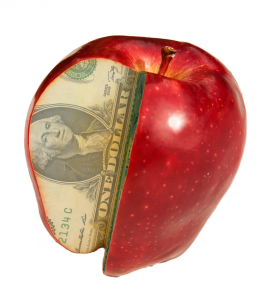Utah farmers gathered to advocate for agricultural awareness and healthy eating on a tight budget as part of the Utah Farm Bureau’s annual Food Check-out Week.
Aurline Boyack, vice president of Member Services at the Utah Farm Bureau, said the program was started by the American Farm Bureau and was initially used to help consumers understand the importance of agriculture, where the produce in stores comes from, and where the local farmers in Utah are.
“It provides a great opportunity for consumers and farmers to interface with each other,” Boyack said.
In Utah, each county puts on its own event. One activity has been for farmers to go to their local grocery store and talk with shoppers and provide handouts about how to eat healthy on a tight budget, what MyPlate means and what food labels mean.
Sara Harward, a farmer from Springville, helped plan events for Utah County. Her husband runs Harward Farms, which grows sweet corn, watermelon and pumpkins and sells them at stands throughout Utah.
Harward helped plan events in both Spanish Fork and Pleasant Grove. She also collected recipes from other local farmers to hand out to shoppers. These recipes contained information on the farmer that provided the recipe and the type of produce they grow in an effort to let people know where they can get locally grown foods.
“When people are more aware, they’re more likely to look for it,” Harward said.
Harward said some shoppers think eating healthier by buying fresh produce is more expensive than buying something from a box. She said in reality there isn’t a big difference in price and the most nutritious option gives you more bang for your buck by providing nutrients the body needs rather than just satisfying hunger.
Lora Beth Brown, a BYU professor of nutrition, dietetics and food science, said there are several ways people can eat healthy on a tight budget. She said sources of protein such as meat, fish and eggs tend to be costly. A cheaper alternative is cooking dried or canned beans and incorporating them into meals several times a week.
Another alternative is to look for whole-grain breads and pastas.
“You’ll feel more satisfied and filled if you eat whole grains,” Brown said.
She also said to make a list before going to the grocery store. This requires planning a menu and looking at what food is needed and what one has on hand. This helps to prevent shoppers from buying food items they have no plan to use.
Brown’s last tip was to not go to the store hungry, because it increases the risk of buying products that look good but are not particularly needed or healthy.
Brown also said a major reason people eat less healthy food rather than produce is because it is more convenient. She said most fruits and vegetables have to be washed, peeled and prepared, which takes a little more time.
“When people are in a hurry or tired or hungry they go for quick and easy,” Brown said.
Food Check-out Week, was one way farmers in Utah are trying to steer people away from convenient eating and back to healthy eating and locally grown products.
Brown said programs like Food Check-out Week will only be helpful to those who pay attention. She said it will help people who are ready to make diet changes but need the information the Utah Farm Bureau is providing to make those changes.





